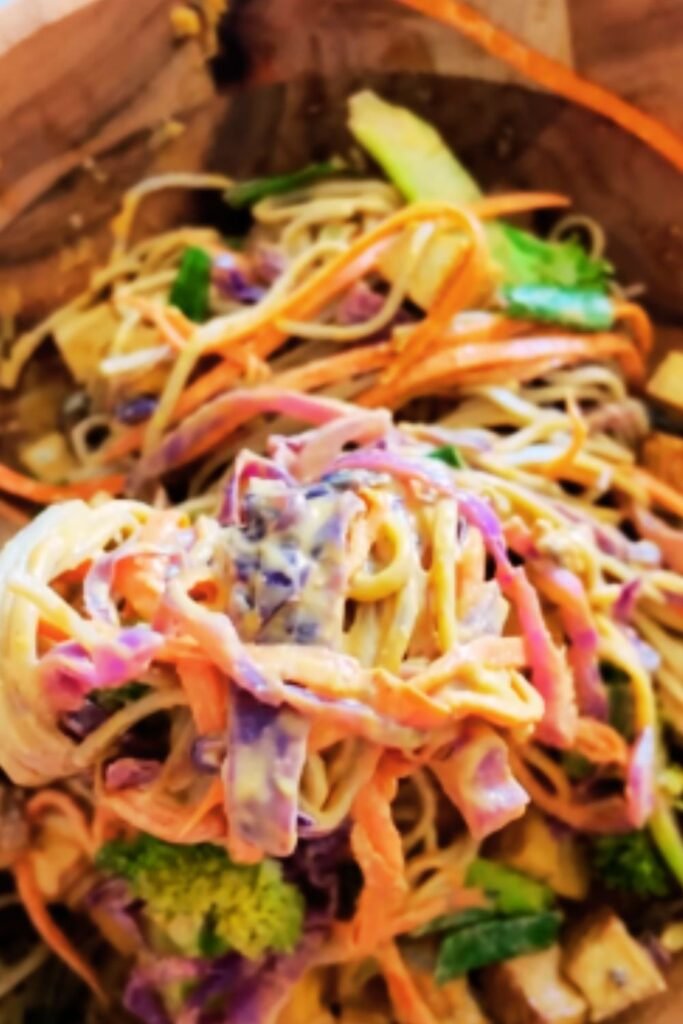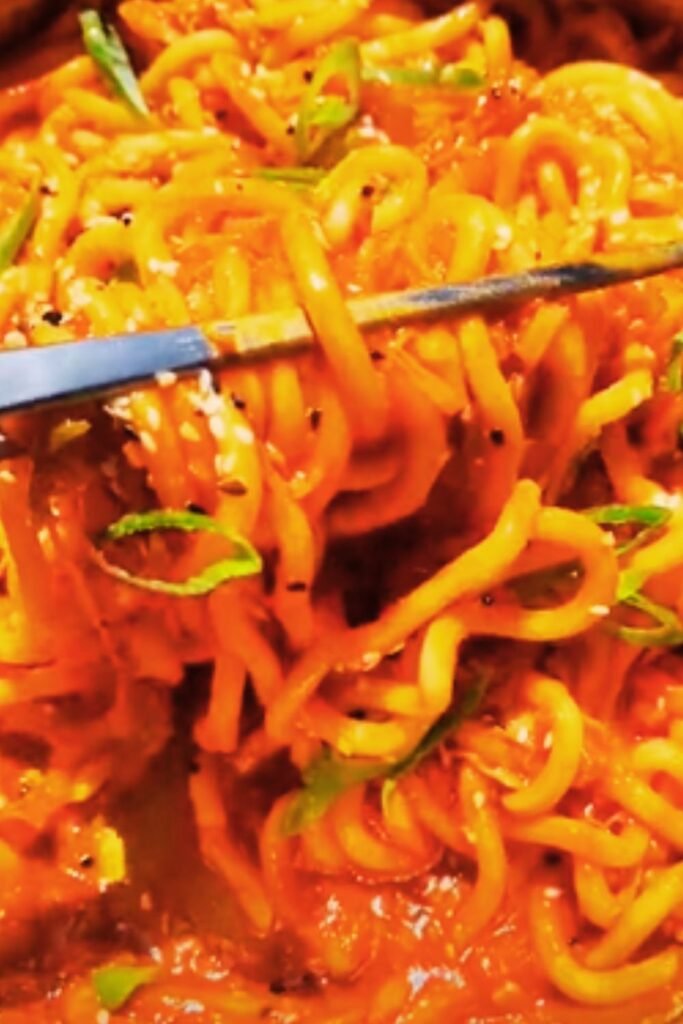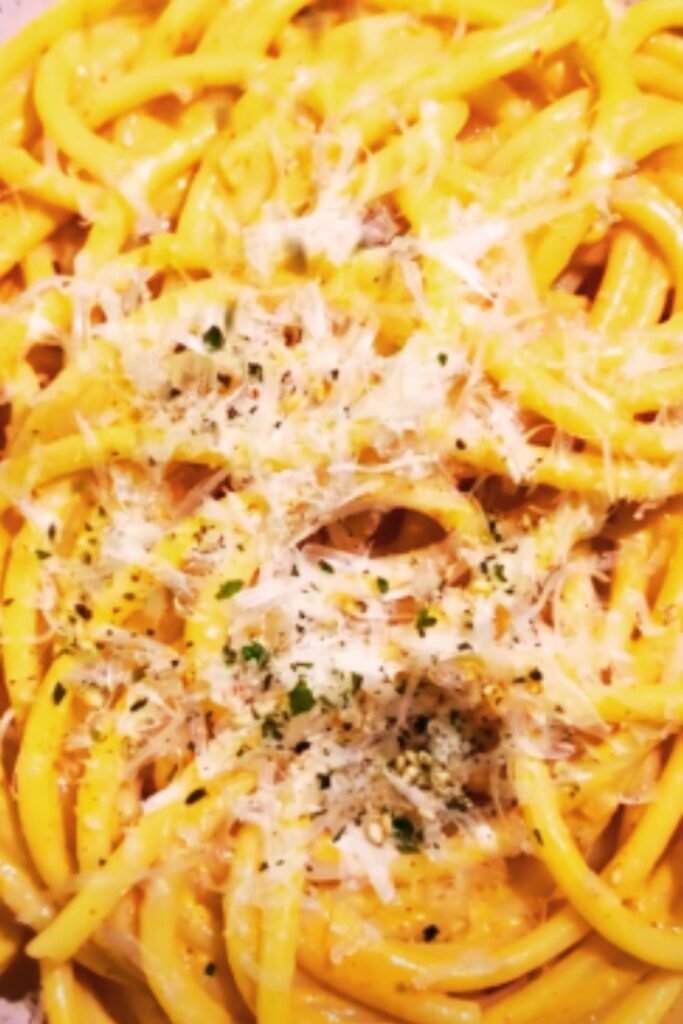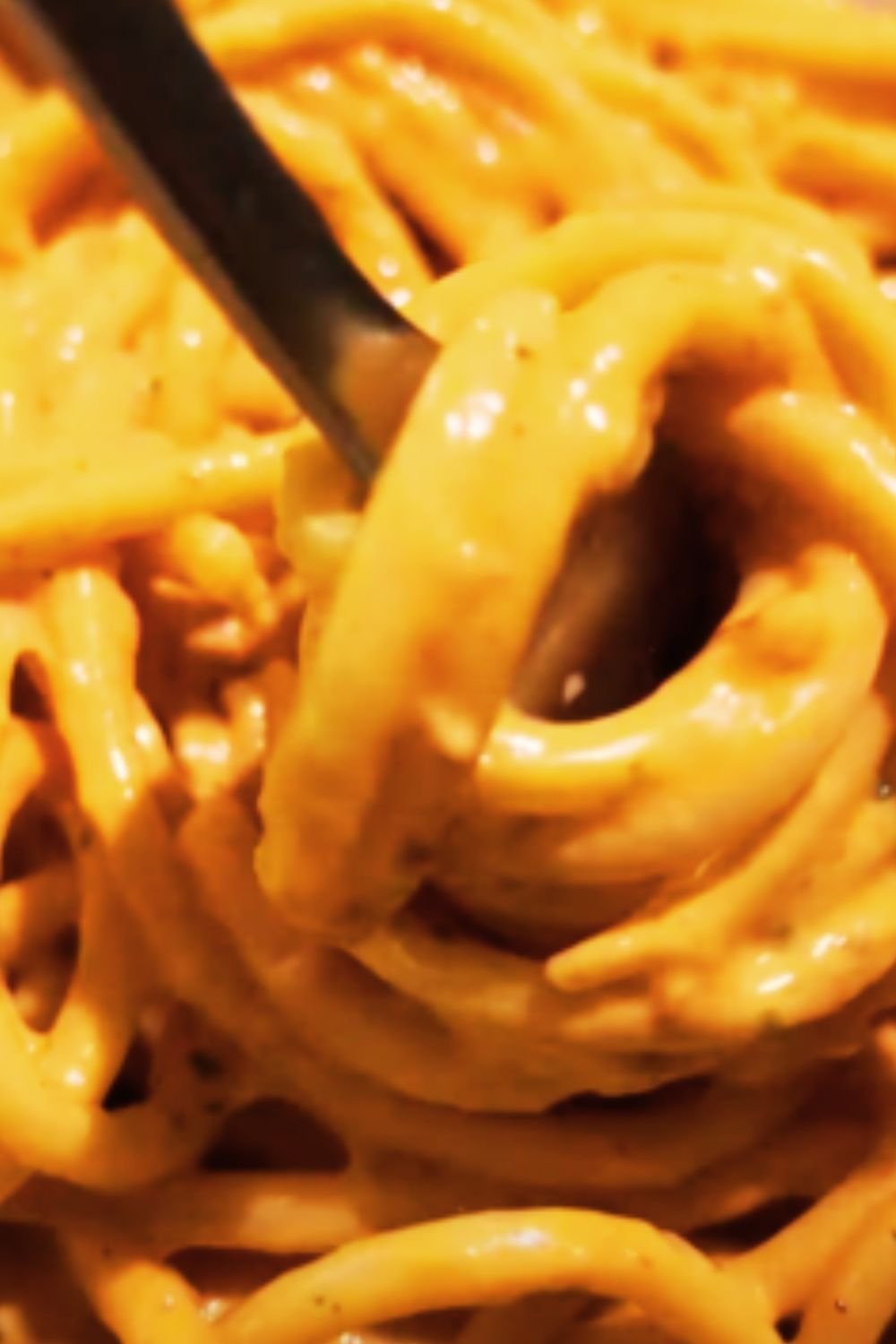There’s something magical about a bowl of noodles that’s equal parts comforting and exciting. When I first discovered gochujang, the Korean fermented chili paste that’s become a global sensation, I knew I had found an ingredient that would transform my home cooking forever. Today, I’m sharing my absolute favorite recipe for Savory Gochujang Noodles – a dish that balances sweet, spicy, and umami flavors in perfect harmony.
What Makes Gochujang Special?
Before diving into the recipe, let me explain why gochujang deserves a permanent spot in your pantry. Unlike one-dimensional hot sauces, gochujang is a complex paste made from fermented soybeans, glutinous rice, salt, and the star ingredient – Korean red chili peppers. The fermentation process, which traditionally takes months, creates a depth of flavor that’s simultaneously spicy, sweet, and savory.
Gochujang isn’t just about heat – it’s about a complex layering of flavors that elevates everything it touches. I’ve found it adds incredible dimension to noodle dishes, particularly when balanced with sesame, garlic, and a touch of sweetness.
The Perfect Noodle Base
When creating these gochujang noodles, I’ve experimented with numerous noodle varieties, and I’ve found that the perfect base depends on what texture you’re craving:
- For chewy satisfaction: Fresh or dried udon noodles
- For slurpable delight: Ramen or somyeon (thin Korean wheat noodles)
- For a bouncy bite: Soba noodles
- For gluten-free options: Rice noodles or sweet potato noodles (japchae)
Each brings its own personality to the dish, but what remains constant is how beautifully they carry the rich, spicy gochujang sauce.
The Science Behind Perfect Noodle Texture
I’ve learned through countless trials that noodle texture makes or breaks a dish. Here’s my guide to achieving noodle perfection:
Salt concentration: : Adding salt to boiling water (approximately 1 tablespoon per 4 quarts) raises the boiling point and seasons the noodles from within.
Cooking time: : Always subtract 1-2 minutes from package directions for a proper al dente texture that will continue cooking slightly in the hot sauce.
Cold shock: : Immediately rinsing cooked noodles under cold water stops the cooking process and removes excess starch that would make noodles clump.
Oil toss: : A light toss with sesame oil after rinsing prevents sticking while adding flavor.
Ingredients for Gochujang Noodles
For the sauce (the heart of the dish):
- 3 tablespoons gochujang paste
- 2 tablespoons soy sauce (I prefer low-sodium)
- 1½ tablespoons rice vinegar
- 2 tablespoons honey or maple syrup
- 2 tablespoons toasted sesame oil
- 3 cloves garlic, finely minced
- 1 tablespoon fresh ginger, grated
- 1 tablespoon toasted sesame seeds
For the noodles and vegetables:
- 12 ounces noodles of choice (udon, ramen, soba, rice noodles)
- 2 tablespoons neutral oil (such as grapeseed or avocado)
- 1 medium onion, thinly sliced
- 2 carrots, julienned
- 1 red bell pepper, thinly sliced
- 2 cups baby spinach or bok choy
- 4 green onions, sliced diagonally
For garnish:
- Extra toasted sesame seeds
- Sliced green onions
- Crushed peanuts or cashews (optional)
- Lime wedges
- Fresh cilantro leaves
Nutritional Profile
I believe in understanding what goes into our bodies, so here’s a breakdown of what makes this dish nutritionally balanced:
| Nutrient | Amount per Serving | Benefits |
|---|---|---|
| Calories | 420 | Balanced energy source |
| Protein | 12g | Muscle maintenance and satiety |
| Carbohydrates | 64g | Sustained energy release |
| Fiber | 6g | Digestive health and satisfaction |
| Fat | 14g | Mostly healthy unsaturated fats |
| Vitamin A | 180% DV | Eye health and immune function |
| Vitamin C | 75% DV | Antioxidant protection and immune support |
| Iron | 15% DV | Oxygen transport and energy production |
| Sodium | 820mg | Flavor and electrolyte balance |
*Values are approximate and based on using udon noodles with all vegetables included.
The Step-by-Step Process
Preparing the Sauce
The sauce is where the magic happens. I’ve found that allowing the flavors to meld before adding to hot noodles makes a significant difference.
- In a medium bowl, combine the gochujang paste, soy sauce, rice vinegar, honey, sesame oil, minced garlic, and grated ginger.
- Whisk thoroughly until smooth and completely incorporated. The consistency should be thick but pourable.
- Add the toasted sesame seeds and mix again.
- Set aside while preparing the other components – this allows the garlic and ginger to infuse into the sauce.
Cooking the Noodles
Perfect noodles create the foundation for this dish. Pay attention to texture here:
- Bring a large pot of water to a rolling boil. Add 1 tablespoon of salt.
- Add your noodles of choice and cook according to package directions MINUS 1-2 minutes (for that perfect al dente texture).
- Reserve ½ cup of the starchy cooking water before draining.
- Rinse noodles under cold water until completely cooled.
- Toss with 1 teaspoon of sesame oil to prevent sticking, then set aside.

Preparing the Vegetables
The vegetables add color, texture, and nutrition. I like to create contrast through different cutting techniques:
- Heat 2 tablespoons of neutral oil in a large wok or skillet over medium-high heat.
- Add the sliced onions and stir-fry for 2 minutes until they begin to soften.
- Add julienned carrots and continue cooking for 2 minutes.
- Add the sliced red bell pepper and cook for another 2 minutes.
- The goal is to maintain some crispness in the vegetables – they should be tender-crisp, not soft.
Bringing It All Together
This is where harmony happens as we unite all elements of the dish:
- Add the cooked noodles to the wok with the vegetables and toss to combine.
- Pour the gochujang sauce over everything and toss vigorously to coat evenly.
- If the sauce is too thick, add some of the reserved noodle cooking water, 1 tablespoon at a time, until you reach your desired consistency.
- Add the baby spinach or bok choy and toss until just wilted from the residual heat.
- Mix in most of the sliced green onions, reserving some for garnish.
Serving Suggestions
I’ve found these noodles are incredibly versatile when it comes to serving styles:
- For a complete meal: Top with a protein of choice – a fried egg with a runny yolk, pan-seared tofu slices, grilled chicken, or sautéed shrimp all work beautifully.
- For a shareable feast: Serve family-style in a large bowl with small plates and chopsticks for everyone to help themselves.
- For meal prep: Divide into containers without the garnishes and refrigerate for up to 3 days. The flavors actually develop wonderfully overnight!

Customize Your Spice Level
One thing I love about this recipe is how easily adaptable it is to different heat preferences:
Mild version: : Reduce gochujang to 1 tablespoon and increase honey to 3 tablespoons.
Medium heat: : Follow the recipe as written for a pleasant warming effect.
Spice enthusiast: : Increase gochujang to 4-5 tablespoons and add 1 teaspoon of Korean red pepper flakes (gochugaru).
Fire-breather: : Add 1 finely diced Thai bird chili to the vegetable stir-fry and increase gochujang to 5 tablespoons.
Variations to Explore
The beauty of this recipe is its flexibility. Here are some of my favorite variations:
Gochujang Peanut Noodles
Add 3 tablespoons of natural peanut butter to the sauce mixture for a creamy twist with Thai-Korean fusion flavors. The richness of peanuts complements the spicy gochujang perfectly.
Seafood Gochujang Noodles
Add 8 ounces of mixed seafood (shrimp, squid, mussels) to the vegetable stir-fry for a protein-rich oceanic version. The natural sweetness of seafood balances the spicy sauce beautifully.
Crispy Tofu Gochujang Noodles
Press and cube extra-firm tofu, toss with cornstarch, and pan-fry until golden before adding to the finished noodles. The textural contrast between crispy tofu and chewy noodles is divine.
Cold Gochujang Noodle Salad
Toss cold noodles with the sauce, add julienned cucumber and radish, and serve chilled for a refreshing summer meal. This version is particularly delightful during hot weather.

Common Mistakes to Avoid
Through my many iterations of this recipe, I’ve made plenty of mistakes so you don’t have to:
- Overcooking the noodles: This leads to a mushy texture that can’t stand up to the robust sauce.
- Using old gochujang: Check the expiration date! Fresh gochujang has a vibrant color and aroma that older paste lacks.
- Not balancing the flavors: Gochujang needs both sweetness and acidity to shine – don’t skip the honey and vinegar.
- Overcrowding the pan: Stir-fry vegetables in batches if needed to maintain proper texture and prevent steaming.
- Adding sauce to cold noodles: The sauce adheres better to warm noodles, so either keep the noodles slightly warm or rewarm them before adding sauce.
The Secret to Restaurant-Quality Noodles
What separates good homemade noodles from great restaurant-quality ones? After much experimentation, I’ve discovered these professional techniques:
- Proper high heat: Restaurants use extremely high heat that’s difficult to replicate at home. Get your pan screaming hot before adding ingredients.
- Working quickly: Have all ingredients prepped and within reach before you start cooking (mise en place).
- Constant movement: Never stop tossing and stirring once the ingredients hit the pan.
- Finishing with fat: A final drizzle of toasted sesame oil just before serving adds a glossy sheen and aromatic finish.
- Thoughtful garnishing: Placing garnishes thoughtfully rather than simply sprinkling them creates visual appeal.
Storing and Reheating
These noodles make excellent leftovers with the right approach:
- Storage: Keep in an airtight container in the refrigerator for up to 3 days.
- Reheating method: Add 1-2 tablespoons of water to the noodles and reheat in a skillet over medium heat, tossing constantly until warmed through.
- Refresh with acid: A squeeze of fresh lime juice after reheating revitalizes the flavors.
- Add fresh elements: Top reheated noodles with newly sliced green onions and sesame seeds to restore freshness.
Why This Recipe Works
After dozens of attempts to perfect this recipe, I’ve identified the key principles that make it successful:
- Building flavor layers: Starting with aromatics (garlic, ginger) creates a foundation that supports the bold gochujang.
- Textural contrasts: Combining tender noodles with crisp-tender vegetables creates an interesting mouthfeel.
- Color theory: The vibrant red sauce against green vegetables and golden sesame seeds creates visual appeal that enhances perception of flavor.
- Balanced heat delivery: The sauce’s fat content (sesame oil) helps distribute the capsaicin compounds in gochujang, creating a more even heat experience.
- Umami maximization: Both the fermented gochujang and soy sauce contribute glutamates that amplify savory satisfaction.

Frequently Asked Questions
What if I can’t find gochujang paste? You might find it in the international foods section of well-stocked supermarkets, Asian grocery stores, or online. If unavailable, you can create a substitute by mixing 2 tablespoons tomato paste, 1 tablespoon miso paste, 1 teaspoon sugar, and 1 teaspoon cayenne pepper – though the flavor profile will be different.
Can I make this dish ahead of time? Yes! The sauce can be made up to 5 days ahead and stored in the refrigerator. The vegetables can be sliced and stored in the refrigerator for up to 2 days. I recommend cooking the noodles fresh when you’re ready to assemble.
Is this dish gluten-free? Not in its original form, but it’s easily adaptable. Use tamari instead of soy sauce, ensure your gochujang is gluten-free (some brands contain wheat), and choose rice noodles or 100% buckwheat soba noodles.
How can I add more protein to this dish? My favorite additions are a fried egg, pan-seared tofu, grilled chicken, or sautéed shrimp. For plant-based options, edamame or tempeh work wonderfully.
Can I reduce the sodium content? Yes, use low-sodium soy sauce and reduce the amount by half, adding a splash of water to maintain liquid volume. You can also increase the proportion of rice vinegar and reduce the soy sauce further.
My sauce is too thick. What should I do? Add the reserved starchy noodle cooking water, one tablespoon at a time, until you reach your desired consistency. The starch in the water helps the sauce cling to the noodles better than plain water would.
Can I use different vegetables? Absolutely! This recipe is incredibly versatile. Try adding mushrooms, snow peas, broccoli florets, or zucchini. Just adjust cooking times according to each vegetable’s density.
How spicy is gochujang paste? Gochujang comes in various heat levels, usually indicated by a number on the packaging (1 being mild, 5 being very spicy). For beginners, start with level 1 or 2 and adjust according to your preference.
Can I make this dish vegan? Yes, simply substitute the honey with maple syrup or agave nectar.
A Journey Through Korean Flavors
My fascination with gochujang began during a cooking workshop where the instructor explained its cultural significance in Korean cuisine. Dating back over 1,000 years, this fermented paste was traditionally made in earthenware pots called onggi, which allowed the mixture to breathe during its months-long fermentation.
What struck me most was learning how gochujang represents the fundamental balance of flavors that Korean cuisine celebrates – sweet, spicy, salty, and umami all harmonized in one ingredient. This balance is what makes these noodles so satisfying; each bite contains the full spectrum of taste experiences.
When I first started experimenting with gochujang at home, I made the common mistake of treating it like any other hot sauce, using it as a finishing condiment. I quickly learned that its complex sugars and starches can scorch easily, and that it blossoms when allowed to meld with other ingredients rather than standing alone.
This recipe represents the culmination of my gochujang journey – a dish that celebrates the paste’s complexity while making it approachable for any home cook.
I hope these Savory & Delicious Gochujang Noodles bring as much joy to your table as they have to mine. Remember, cooking is about exploration and making each recipe your own – so adjust, experiment, and most importantly, enjoy the process!


